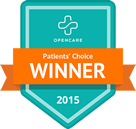 Myopia, commonly known as nearsightedness, is a growing concern among children, with its prevalence increasing significantly in recent years. Myopia can lead to severe eye problems and even blindness if left untreated. Taking appropriate measures to control myopia progression is essential, but the question remains, at what age should you start your child’s myopia control plan?
Myopia, commonly known as nearsightedness, is a growing concern among children, with its prevalence increasing significantly in recent years. Myopia can lead to severe eye problems and even blindness if left untreated. Taking appropriate measures to control myopia progression is essential, but the question remains, at what age should you start your child’s myopia control plan?
The Progression Of Myopia And How To Control It
The development of myopia (nearsightedness or short-sightedness) usually occurs between the ages of six and twelve. As this condition progresses, it becomes more severe every few to several months with an annual progression rate ranging from -0.07 ± 0.02D to ± -0.51 ± 0.02D.
Is There A Right Time To Start Myopia Control?
Recent studies have shown that the earlier a child is diagnosed with myopia, the more rapidly their blurred vision and glasses prescription will deteriorate. A child with early-onset myopia is more likely to develop high myopia later in life.
Children under 12 are still in a fast-progressive phase of myopia, so getting started on myopia control as soon as possible is essential.
Is There a Benefit to Starting Early?
Because myopia progression is accelerated between the ages of 7-10, there is a more significant overall effect of slowing it down by 50% with proactive treatment.
The earlier your child begins myopia control treatment, the better the odds of a successful outcome. A recent study showed that children who receive myopia treatment for four years from the age of seven would probably have a final myopia outcome of -4.00D, while those who begin treatment for myopia at age 11 and receive treatment for four years will probably have a final myopia outcome of -4.50D.
Is There An Ideal Way To Treat Myopia?
There are treatment options available, such as orthokeratology. Doctors can prescribe atropine eye drops in low doses and multifocal glasses as myopia control treatments. Various factors, such as age, lifestyle, and eye conditions, determine the best treatment for your child. Each treatment has advantages and disadvantages. If your child has myopia, consult an eye care professional for the best treatment plan.
A recent study recommended the following treatment plan:
- Atropine eye drops - Children ages 4 to 6:
- Ortho-k contact lenses - Children ages six and up
- Soft contact lenses - Children ages 7 to 8:
- Specialized myopia control glasses - Children ages eight and up
Mark A. Bullimore provides an interesting statistic suggesting soft contact lens wear is safer among children 8-12.
When Should We Stop Myopia Control?
Myopia control should continue until the child’s eye has stopped growing, usually in the late teenage years. Approximately half of the myopic children reach a stable myopia progression range at 16. Statistics show that by age 18, about 75% of myopic children would have reached a steady progression rate. However, the duration of myopia control treatment varies depending on the child’s eye condition and the effectiveness of the treatment.
Slow Childhood Nearsightedness in 5 Steps
Myopia is a growing concern among children, and taking appropriate measures to control its progression is crucial. Starting myopia control earlier can significantly reduce the risk of developing severe eye problems later in life.

